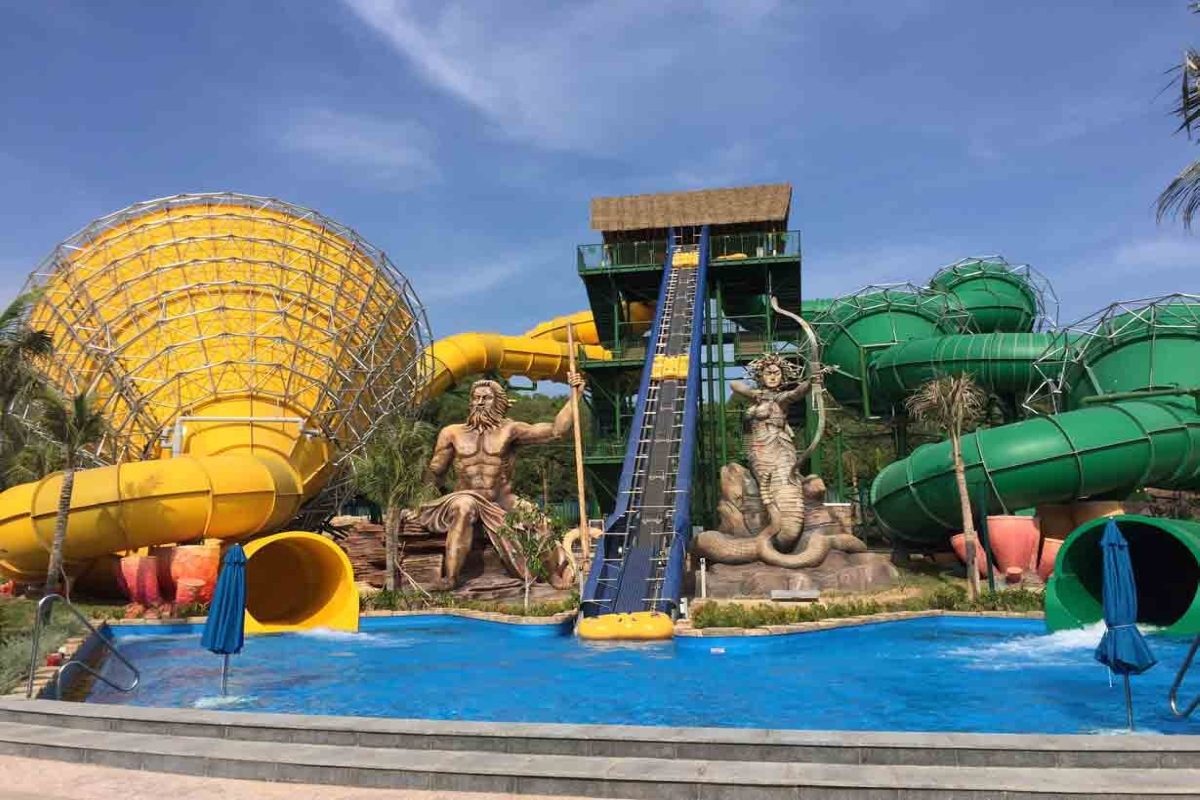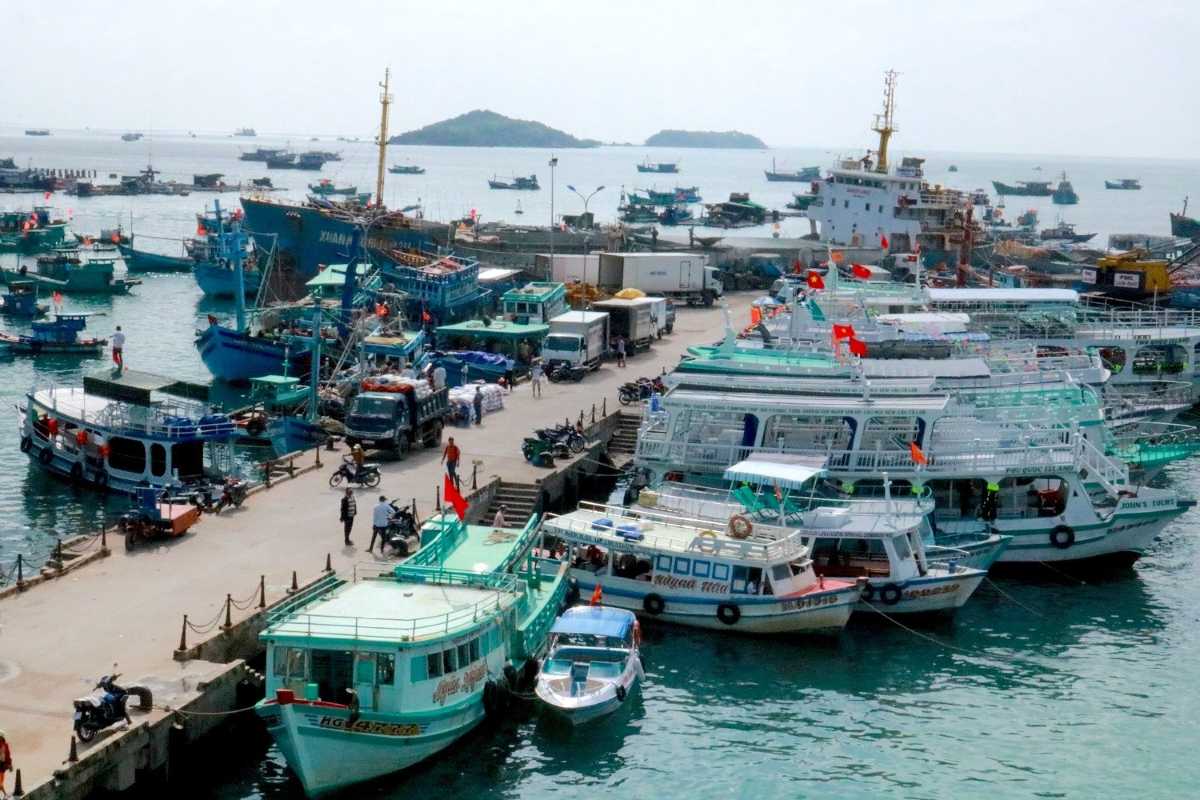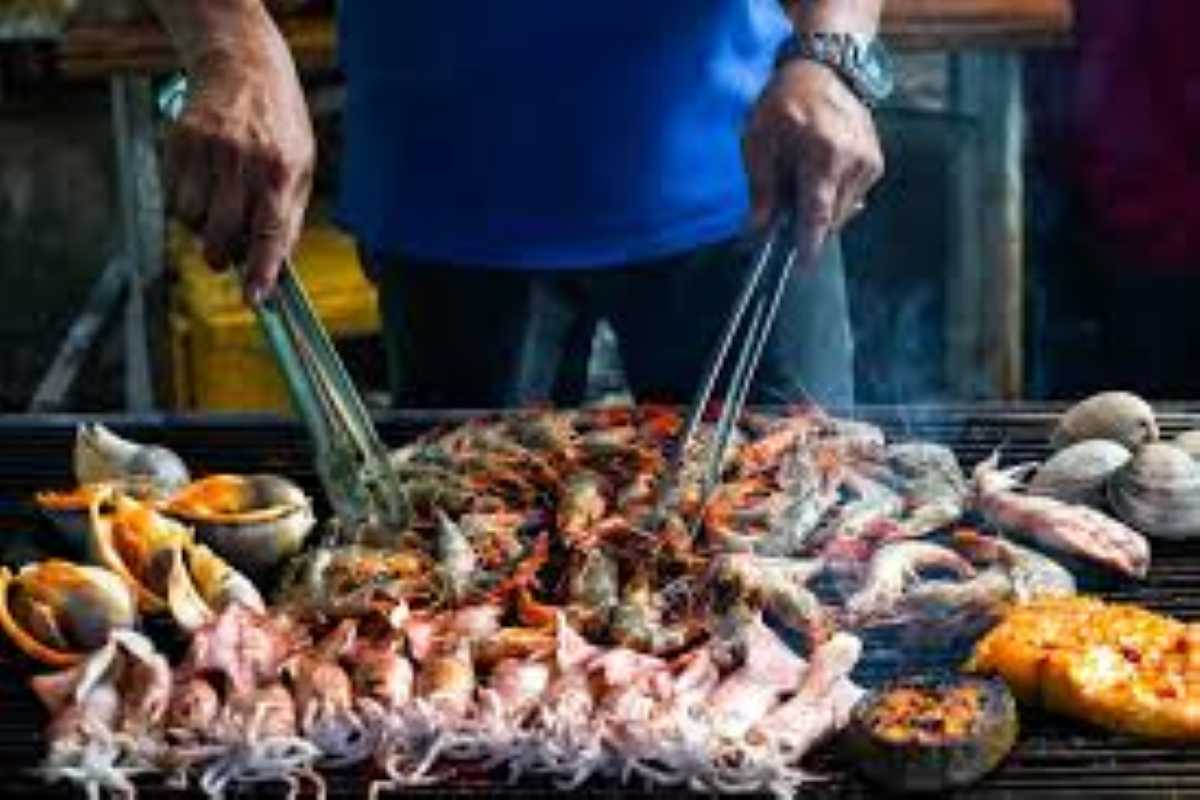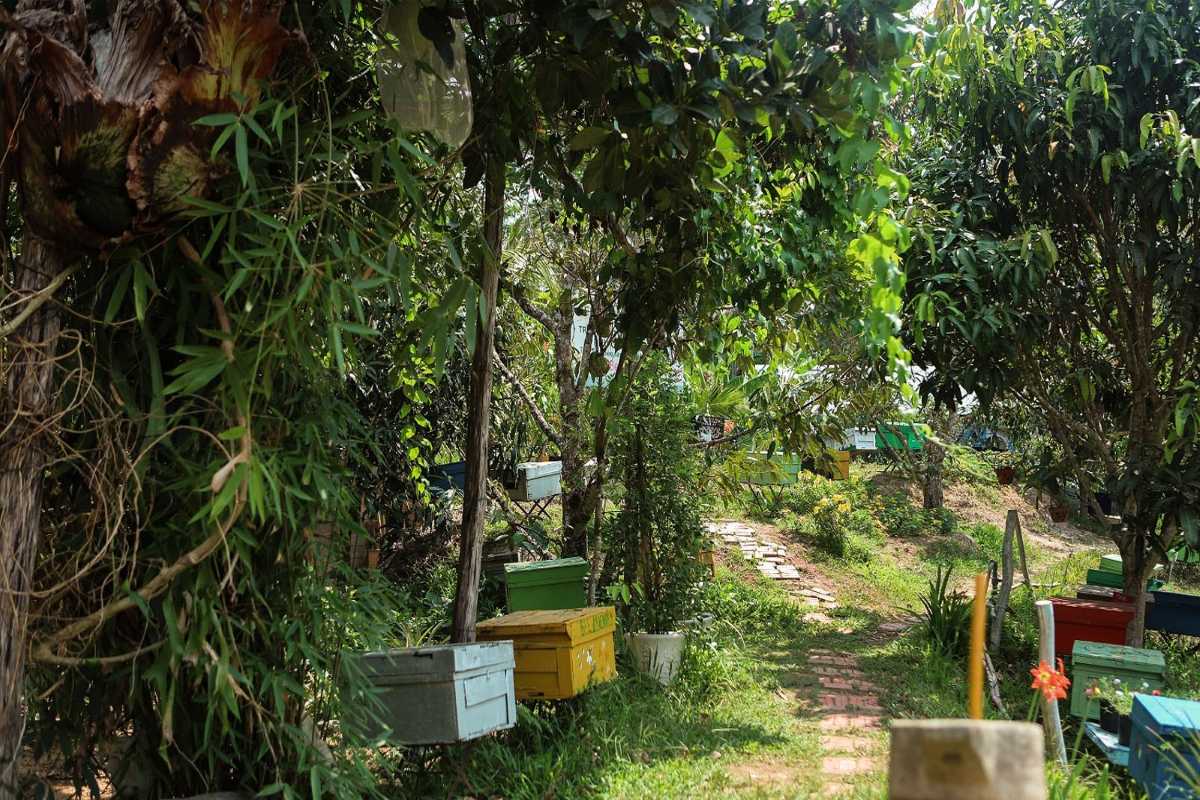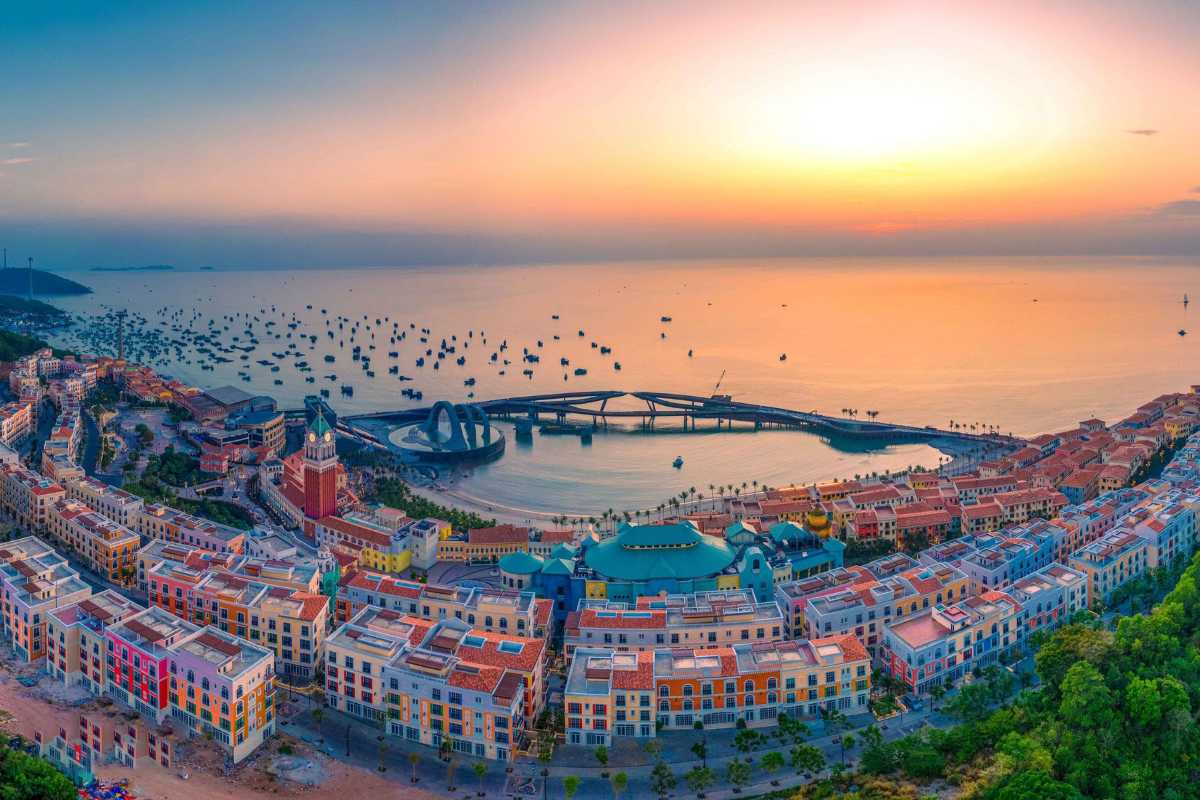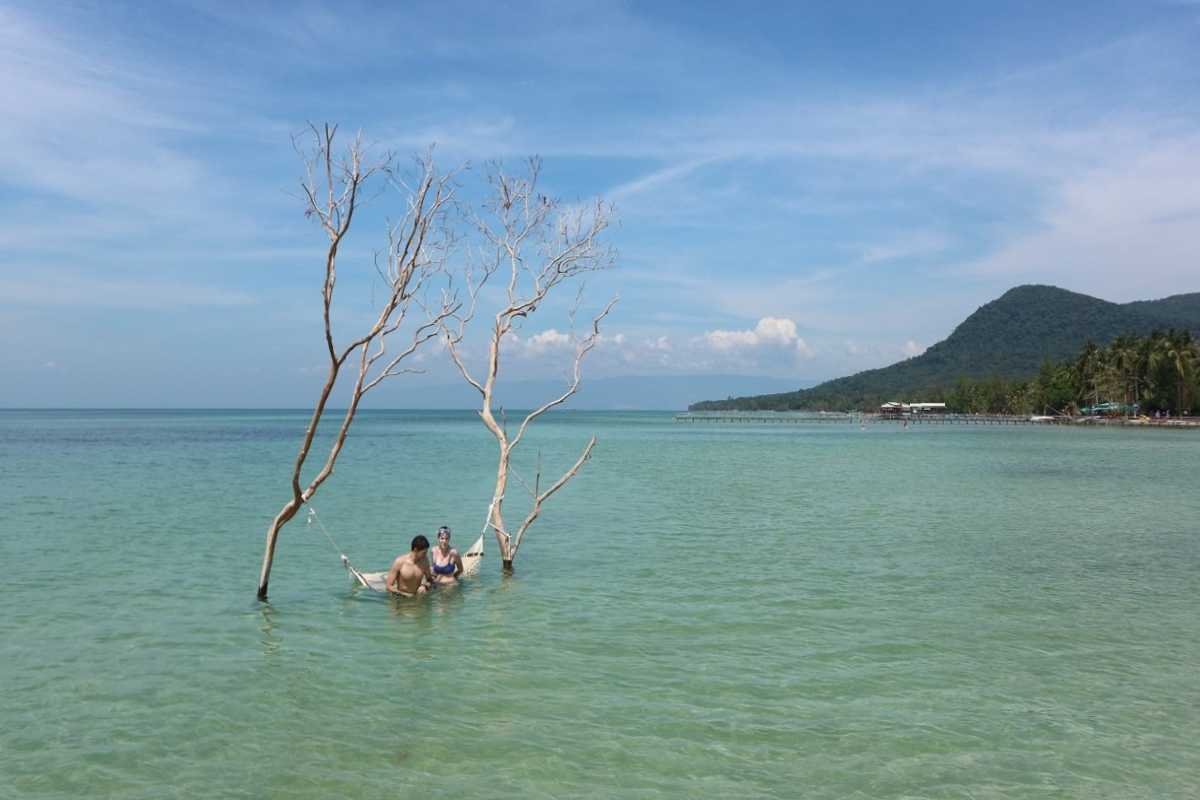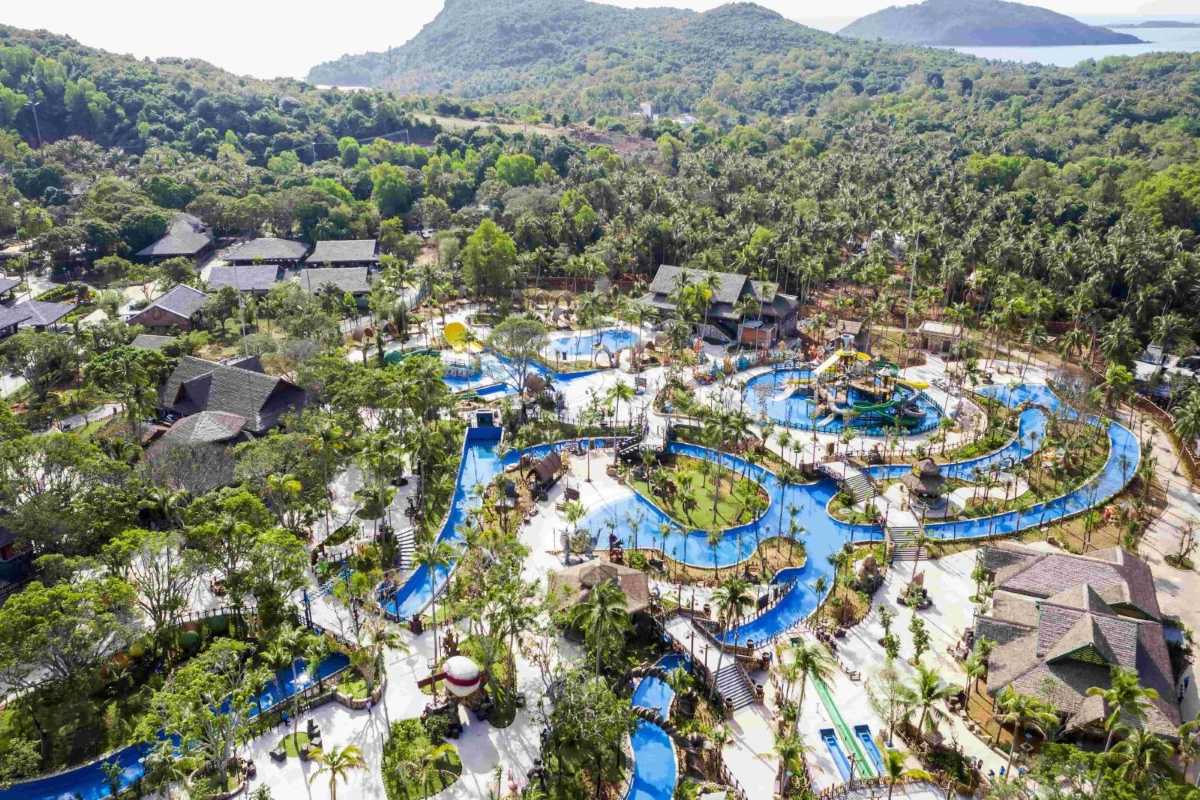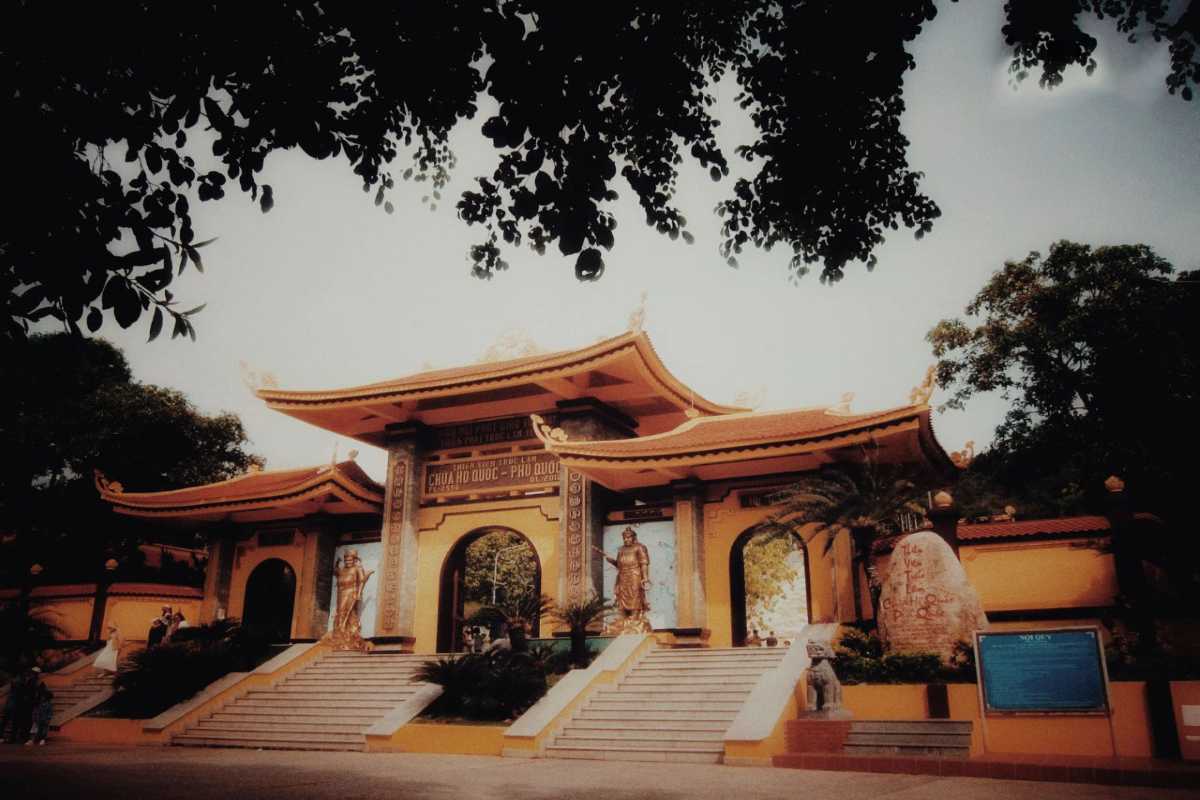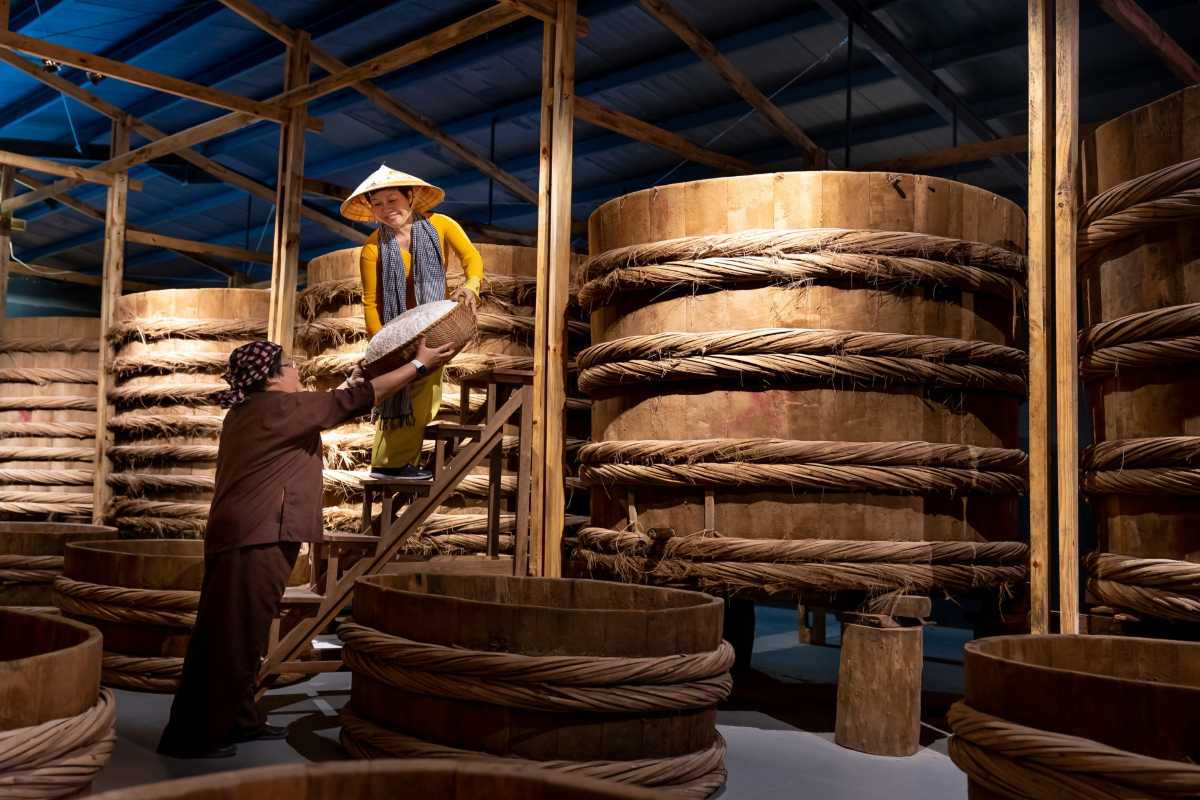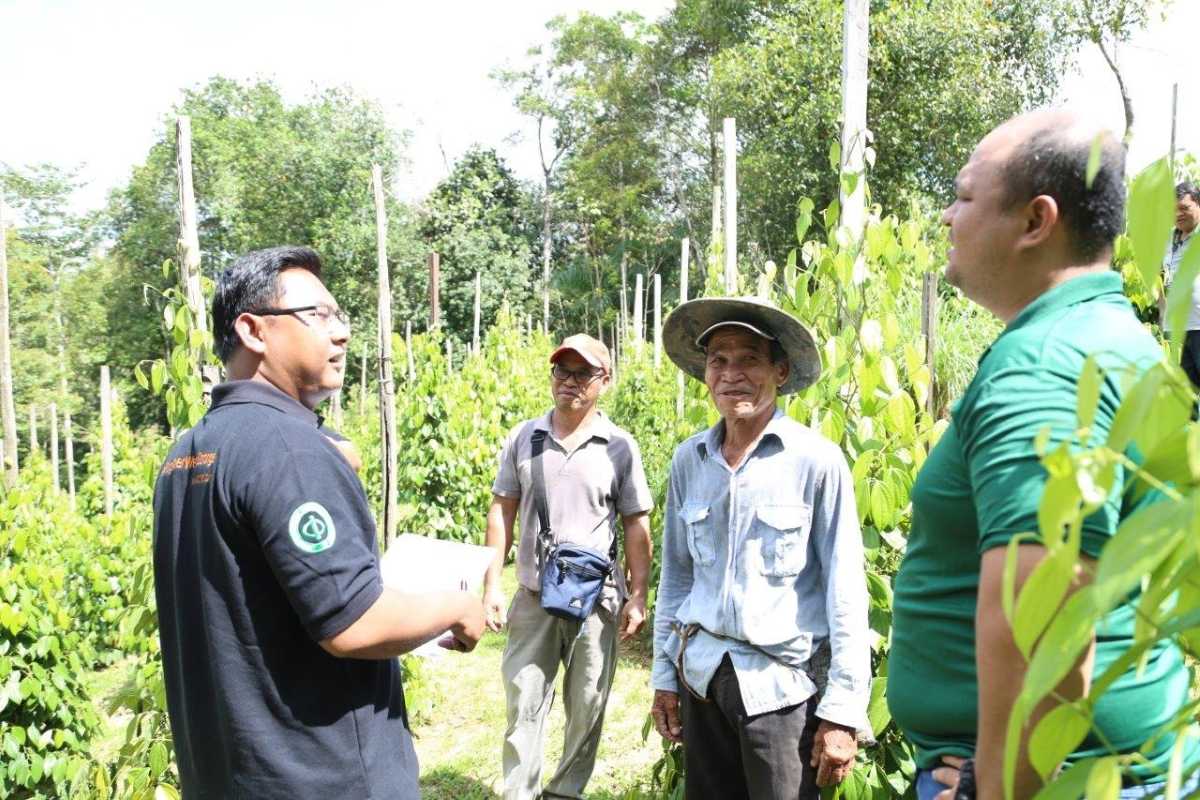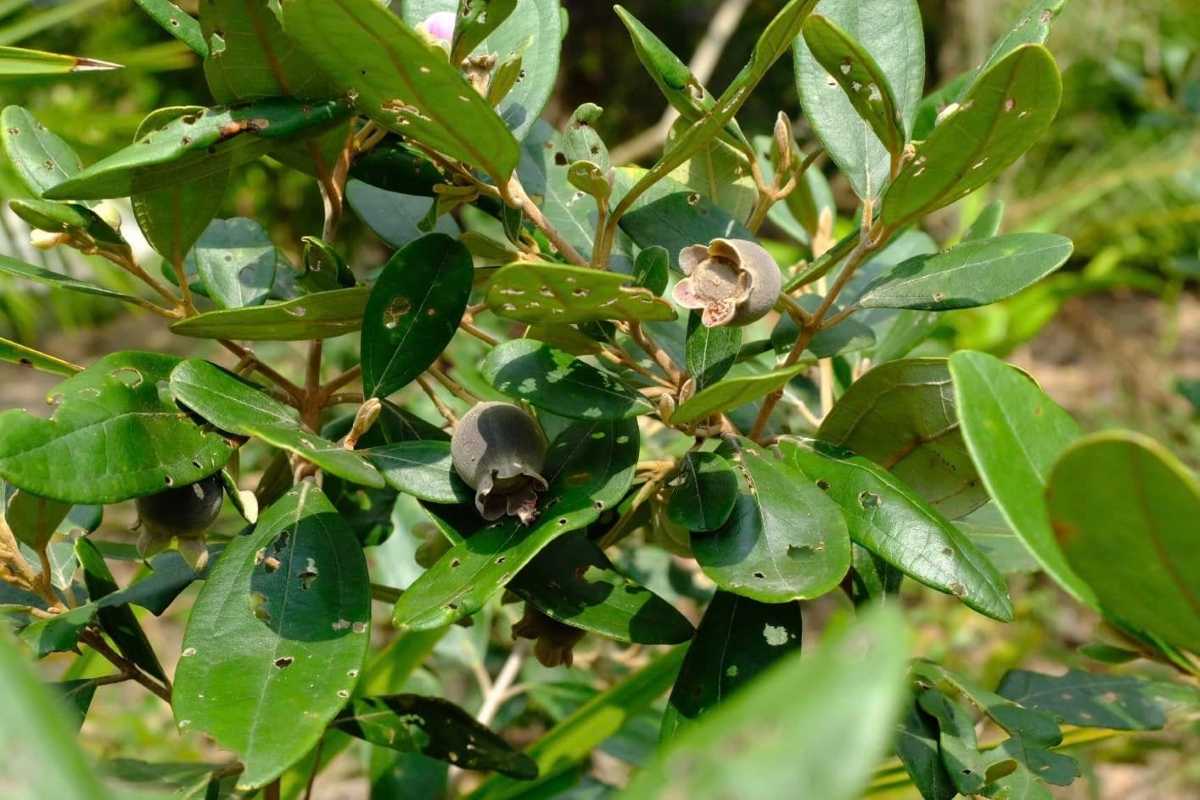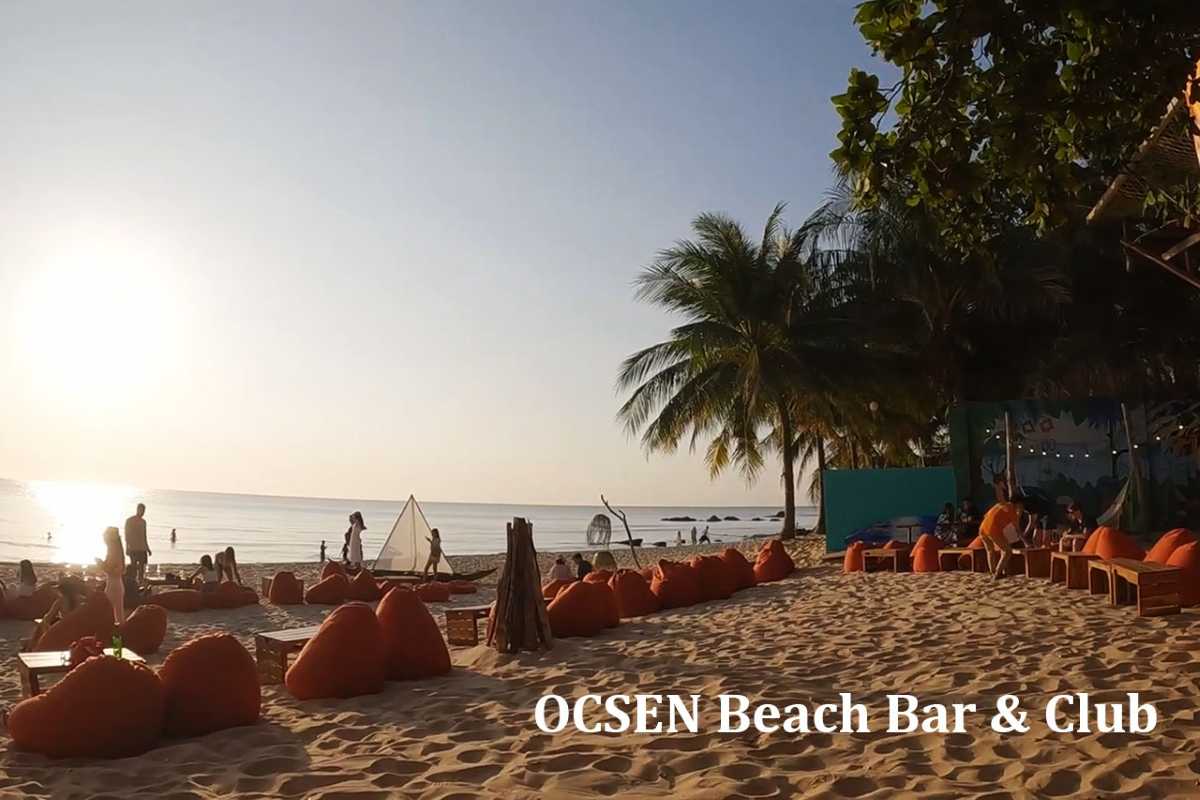Phu Quoc Prison History & Travel Guide: Exploring Coconut Tree Prison
Phu Quoc Prison is a historic war site on Phu Quoc Island that served as a detention center during the Vietnam War. It offers visitors a chance to explore original prison buildings, learn about prisoner life, and understand Vietnam’s wartime history through detailed exhibits and guided tours.
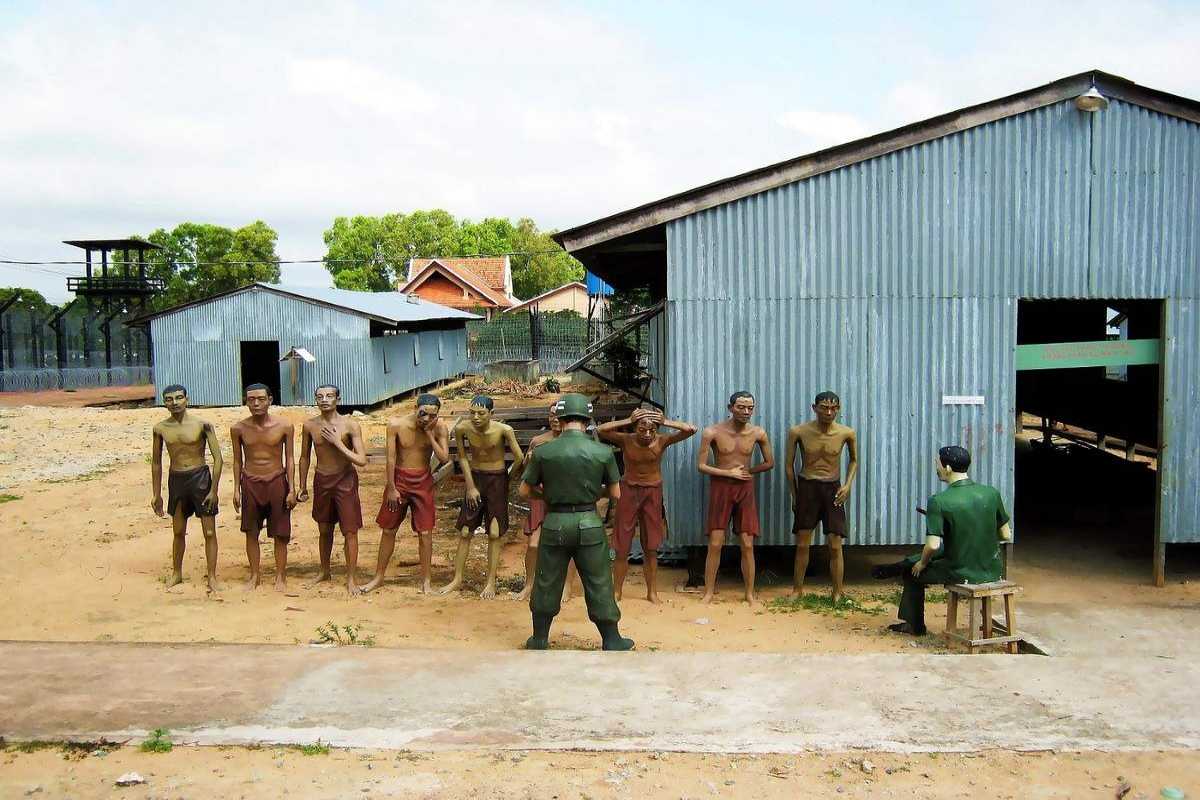
Introduction to Phu Quoc Prison
Phu Quoc Prison is a significant historical site on Phu Quoc Island known for its role during the Vietnam War. This prison, also called Coconut Tree Prison, offers a glimpse into Vietnam’s wartime past through preserved structures and informative exhibits. Understanding its history helps you appreciate the resilience and sacrifices made by prisoners.
Visiting Phu Quoc Prison lets you explore a key piece of Vietnam’s cultural heritage and learn about the harsh realities of war. Plan your visit to Phu Quoc Prison to deepen your connection with this historic landmark.
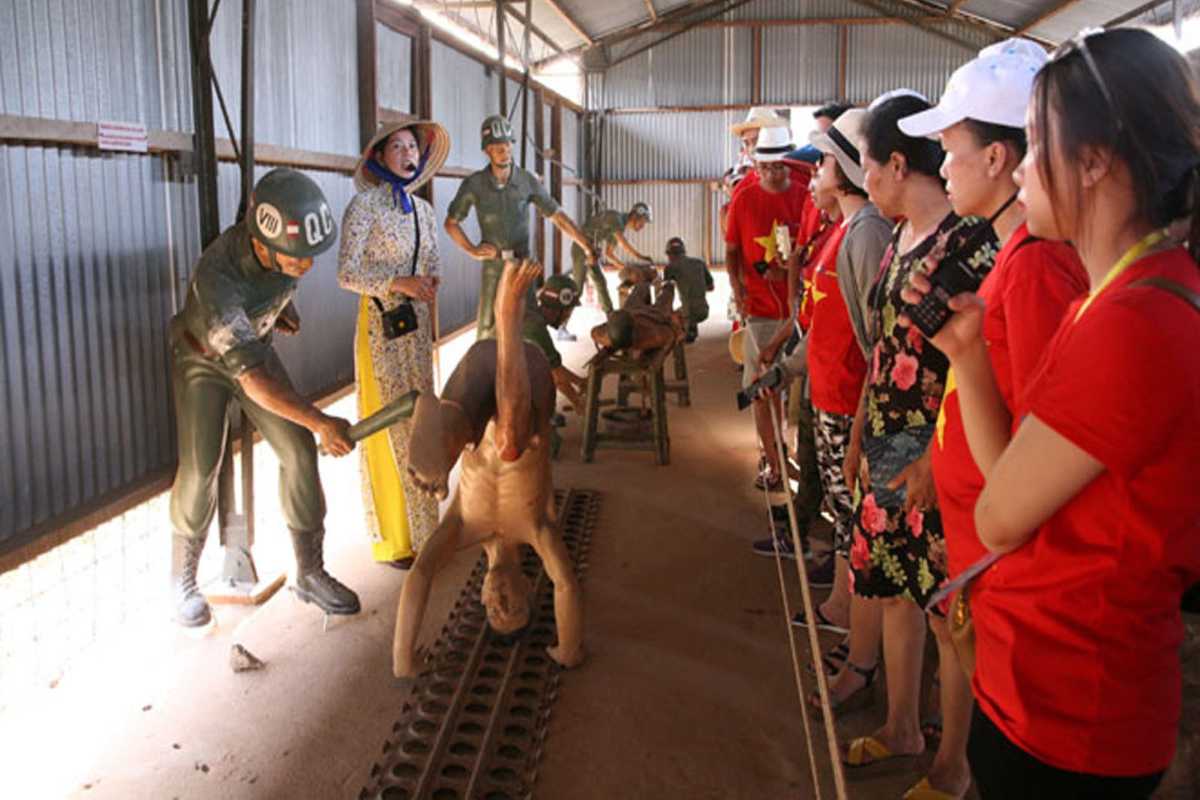
Overview of the Prison
This section provides a concise look at the prison’s physical layout and remaining structures. The Coconut Tree Prison complex includes interrogation rooms, cramped prison cells, and areas once used for punishment. These spaces have been preserved to give you an authentic sense of the prison environment during wartime.
You will find detailed exhibits explaining prisoner conditions and the overall layout of the site. Exploring these areas helps you visualize life inside the prison and the severity of incarceration during the Vietnam War.
Plan your tour with an overview of Phu Quoc Prison so you can fully appreciate its significance during your visit.

Historical Significance in Vietnam’s War History
The Phu Quoc Prison History reveals the prison’s critical role during the Vietnam War, where it detained political prisoners and Viet Cong soldiers. Known for harsh conditions and brutal torture methods, the prison symbolizes suffering and resistance during this conflict.
Understanding the prison’s history provides context to its cultural importance today. The site serves as a somber war memorial and educational destination, helping visitors grasp the impact of war on Vietnam and its people.
Visiting the Phu Quoc Prison History site offers insight into Vietnam’s past and honors those who endured its hardships.
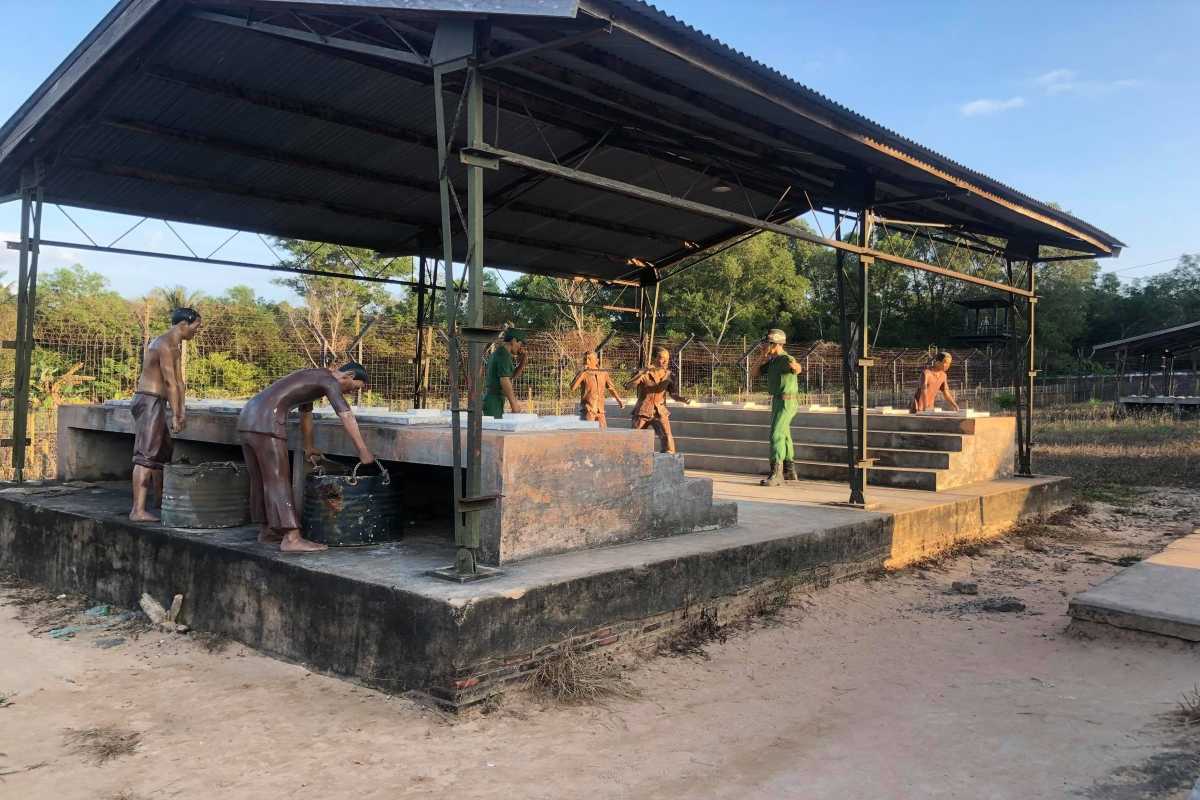
Why Visit Coconut Tree Prison Today
Visiting Coconut Tree Prison today lets you experience an important part of Vietnam’s cultural heritage. The site offers educational tours, multimedia presentations, and preserved buildings that tell stories of courage and survival. It also supports cultural preservation and historical education efforts.
Whether you are a history enthusiast or a curious traveler, the Phu Quoc Prison visitor experience is enriching and thought-provoking. Learning about the prison’s past deepens your understanding of Vietnam’s journey and supports responsible tourism.
Plan your visit to Coconut Tree Prison and explore this unique cultural landmark with Asia Travel Links.
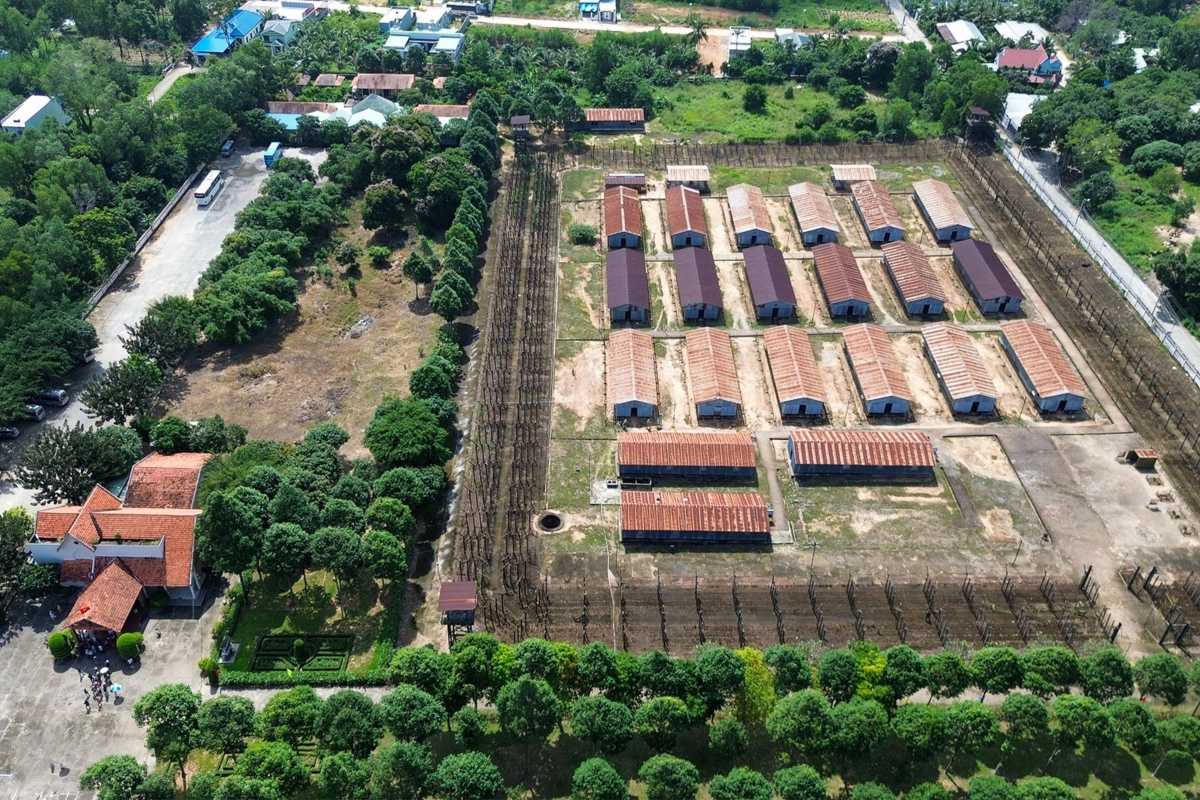
Historical Background and Development
Phu Quoc Prison History begins with its construction during the French Colonial Era when it was established as a detention center for political prisoners opposing colonial rule. The prison was designed with harsh conditions, reflecting the colonial penal system’s severity. Over time, it expanded and evolved, becoming notorious during the Vietnam War for holding Viet Cong fighters and political detainees. Its legacy today represents a significant chapter in Vietnam’s fight for independence and resilience.
Visiting Phu Quoc Prison allows you to witness this layered history firsthand. Plan your exploration of this historical landmark to gain insight into its construction, wartime role, and ongoing preservation.

Construction During the French Colonial Era
The origins of Phu Quoc Prison trace back to the French Colonial Era when the French established the facility as part of their network of penal institutions in Vietnam. Built to detain political prisoners and suppress resistance, the prison featured heavy stone walls, isolation cells, and strict surveillance.
The architecture reflects colonial penal philosophies, with cramped quarters designed for control rather than comfort. These early designs set the foundation for the prison’s later expansions during wartime.
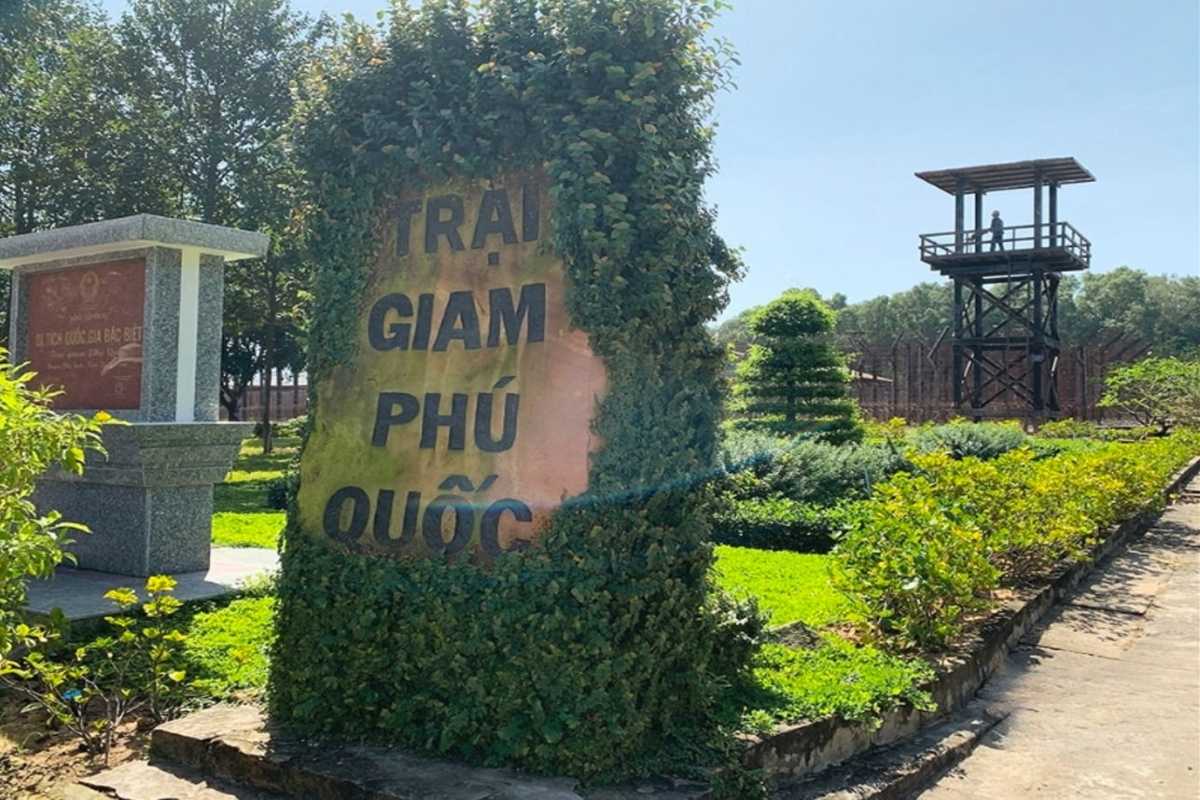
Role During the Vietnam War
During the Vietnam War, Phu Quoc Prison became a central detention and torture site under the South Vietnamese government. It housed thousands of prisoners, primarily Viet Cong members and political activists, subjecting them to harsh interrogations and brutal living conditions. The prison’s interrogation rooms and torture chambers are stark reminders of this grim period.
Its role during this era highlights the complex history of conflict and resistance in Vietnam, making the site a vital part of the country’s cultural memory and war heritage.
Types of Prisoners Held
This section covers the diverse groups detained at Phu Quoc Prison during its operation:
- Political Prisoners: Individuals opposing colonial or South Vietnamese regimes
- Viet Cong Fighters: Captured guerrilla soldiers during the Vietnam War
- Common Criminals: Lesser-known inmates detained for civil offenses
- Foreign POWs: Prisoners of war held during different conflict phases
These categories illustrate the breadth of detainees who endured the prison’s harsh realities.
Torture Methods and Conditions
Prisoners faced extreme hardships including:
- Waterboarding: Simulated drowning to extract information
- Confinement in Dark Cells: Isolation in small, unlit spaces
- Physical Beatings: Regular corporal punishment
- Starvation and Deprivation: Minimal food and harsh living environments
These methods underline the severe human rights abuses that occurred within the prison walls.
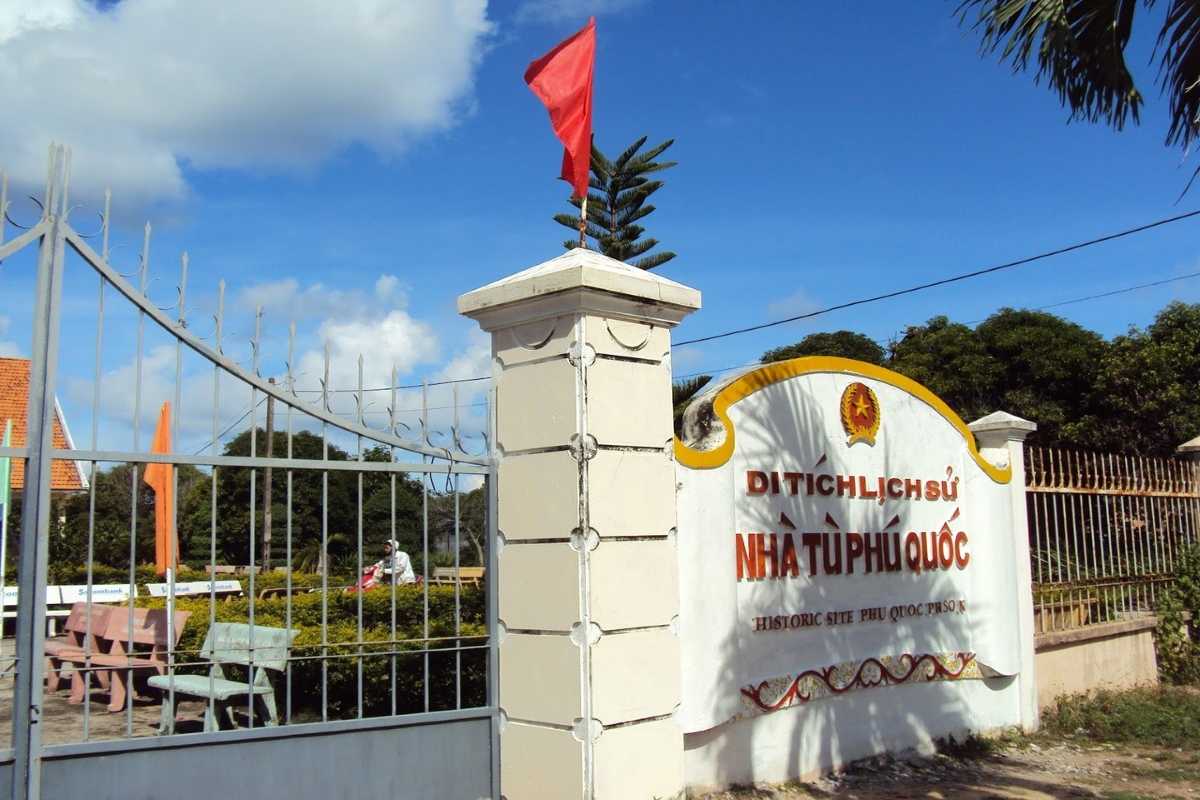
Post-War Use and Preservation Efforts
After the war, Phu Quoc Prison ceased operation as a detention center and gradually transformed into a historical site. Preservation efforts by the Vietnamese government and local organizations focus on maintaining the prison’s original structures and educating visitors about its history.
The site now functions as a museum and war memorial, attracting tourists and scholars alike. These efforts contribute to cultural preservation and raise awareness of the prison’s role in Vietnam’s history.
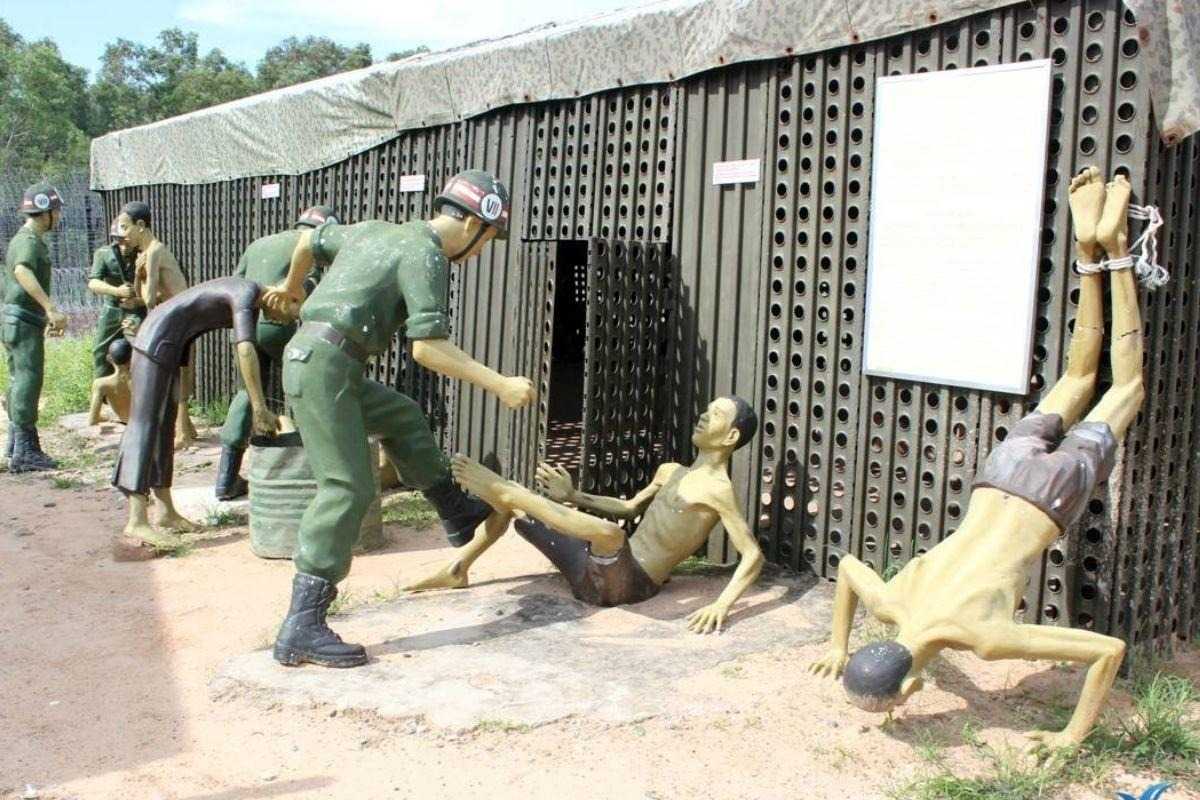
Exploring the Prison Site
Phu Quoc Prison offers a unique opportunity to explore one of Vietnam’s most significant war sites. The prison complex is carefully preserved, allowing you to walk through its key areas and understand the harsh conditions prisoners endured. From cramped cells to torture chambers and memorials, every section tells a story of resilience and struggle. Knowing what to expect helps you prepare for a meaningful visit and deepens your connection to this historic place. Plan your visit to Phu Quoc Prison to fully experience its somber atmosphere and educational value.

Key Sections of the Prison Complex
The main areas of Phu Quoc Prison include several distinct sections, each with historical significance:
- Interrogation Rooms: Spaces where prisoners faced intense questioning and torture.
- Living Quarters and Cells: Cramped rooms where detainees were confined under harsh conditions.
- Execution Areas: Sites where prisoners were executed, now memorialized to honor victims.
- Memorials: Dedicated spaces remembering the suffering and bravery of inmates.
Understanding these areas prepares you for a comprehensive tour of the Coconut Tree Prison complex and its grim history.
Interrogation Rooms and Torture Chambers
The interrogation and torture rooms at Phu Quoc Prison reveal the brutal treatment prisoners faced. These spaces include:
- Waterboarding Areas: Designed to simulate drowning.
- Dark Cells: Small, windowless rooms used for isolation.
- Beating Zones: Locations where physical punishment was frequent.
- Starvation Cells: Places where food and water were deliberately withheld.
These rooms illustrate the severe human rights abuses that occurred and are preserved to educate visitors about this painful history.
Living Quarters and Cells
Prisoners endured overcrowded and unsanitary conditions in the living quarters. Features include:
- Small Cells: Often housing multiple prisoners in tight spaces.
- Poor Ventilation: Leading to extreme heat and discomfort.
- Basic Facilities: Lack of beds and proper sanitation.
- Overcrowding: Exacerbating the harsh living environment.
These conditions highlight the daily struggles faced by inmates and deepen understanding of their resilience.
Execution Areas and Memorials
The execution sites within Phu Quoc Prison serve as stark reminders of the prison’s deadly past. Today, memorials have been established to honor those who lost their lives. These include:
- Execution Chambers: Preserved to demonstrate the final moments of many prisoners.
- Commemorative Plaques: Honoring victims and telling their stories.
- Memorial Gardens: Quiet spaces for reflection and remembrance.
- Educational Displays: Informing visitors about the human cost of war.
Visiting these areas encourages respectful remembrance and cultural appreciation.
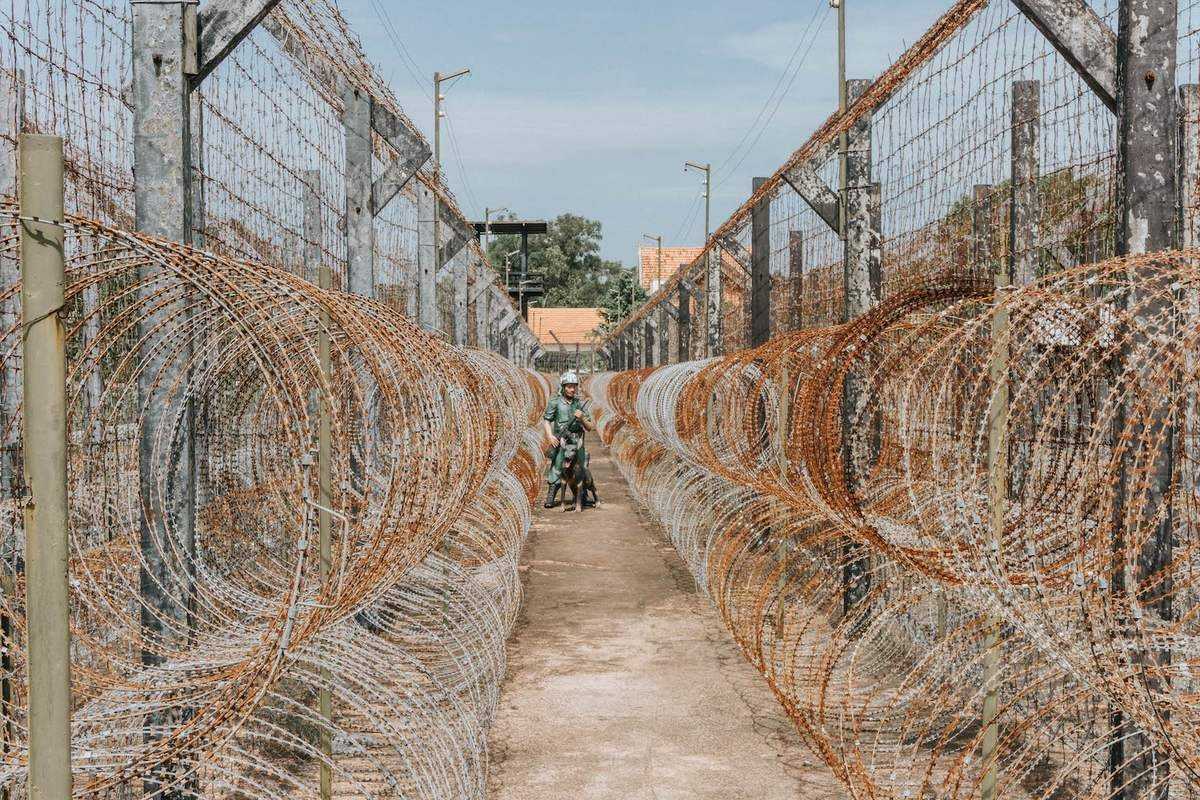
Exhibitions and Multimedia Presentations
The prison museum offers exhibitions and multimedia displays to enhance your visit. These features include:
- Historical Artifacts: Items used by prisoners and guards.
- Photographic Displays: Documenting the prison’s history.
- Video Presentations: Interviews with survivors and historians.
- Interactive Exhibits: Providing immersive educational experiences.
These exhibitions provide context and deepen your understanding of Phu Quoc Prison’s significance.
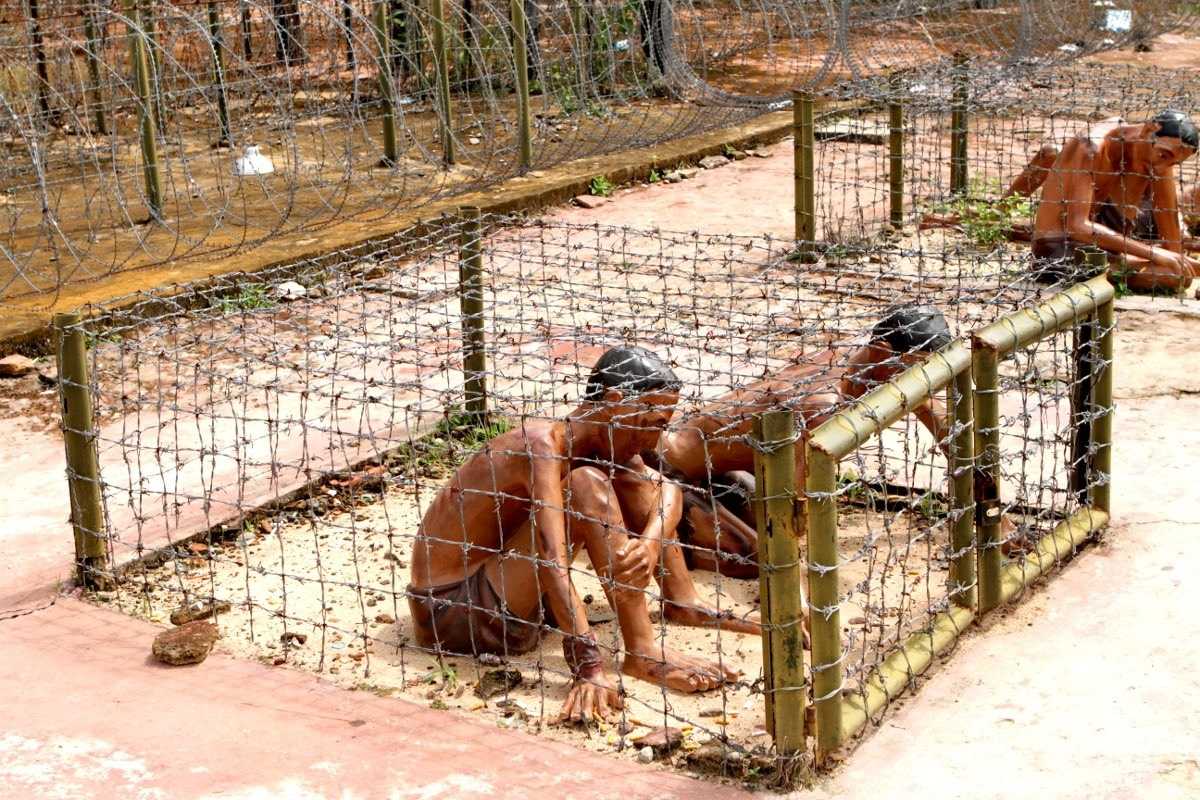
Guided Tours vs. Self-Guided Visits
Visitors to Phu Quoc Prison can choose between guided tours and self-guided exploration:
- Guided Tours: Led by knowledgeable guides who share detailed history and stories, offering deeper insights.
- Self-Guided Visits: Allow you to explore at your own pace, using informational signs and brochures.
- Group Tours: Often include transportation and are suitable for those wanting structured visits.
- Independent Visits: Best for travelers who prefer flexibility and solitude.
Consider your preferences to select the option that best enhances your experience of Coconut Tree Prison.
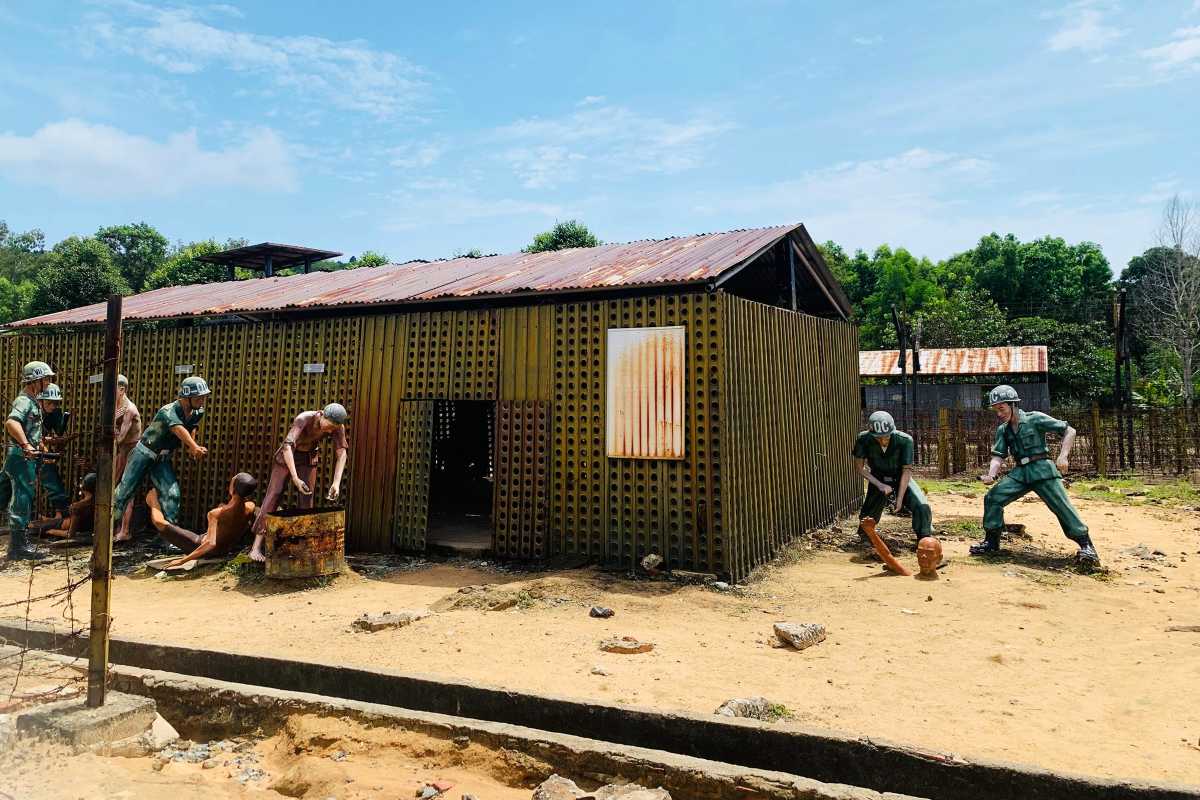
Practical Travel Information
Phu Quoc Prison is located on Phu Quoc Island, close to the town of Duong Dong. Knowing how to get there and what to expect will help you plan your visit smoothly. This section provides practical details about transportation, entry fees, opening hours, and visitor facilities. Understanding these logistics allows you to focus on experiencing the rich history of the site. Prepare well to make your trip to Phu Quoc Prison hassle-free and meaningful.

Location and How to Get There
Phu Quoc Prison is situated about 10 kilometers northeast of Duong Dong town. The prison is accessible via well-marked roads, making it easy to reach by various modes of transport. Most visitors travel from Duong Dong as it is the island’s main hub.
Getting to the prison involves traveling along Route 46, a straightforward drive or motorbike ride. Whether you choose taxi, motorbike, or private car, signs will guide you to the historic site. Knowing these routes helps you plan your visit with confidence.
Transportation Options from Duong Dong Town
You have several transportation choices to reach Phu Quoc Prison from Duong Dong:
- Taxi: Quick and comfortable option for groups or those unfamiliar with local roads.
- Motorbike Rental: Popular among adventurous travelers seeking flexibility.
- Private Car: Suitable for families or guided tours offering door-to-door service.
- Public Transport: Limited availability, generally less convenient for tourists.
Choosing the right transport depends on your comfort, budget, and travel style. Plan accordingly to ensure timely arrival and a relaxed visit.
Accessibility and Road Conditions
The roads leading to Phu Quoc Prison are mostly paved and in good condition, suitable for all types of vehicles. However, some areas may be narrow or have occasional potholes during the rainy season.
- Wheelchair Access: Limited due to the historic nature of the site and uneven surfaces.
- Parking: Available near the entrance but can fill up during peak times.
- Safety: Roads are generally safe but remain cautious on motorbikes, especially if unfamiliar with local traffic.
Understanding road conditions and accessibility ensures a safe and comfortable journey to the prison.
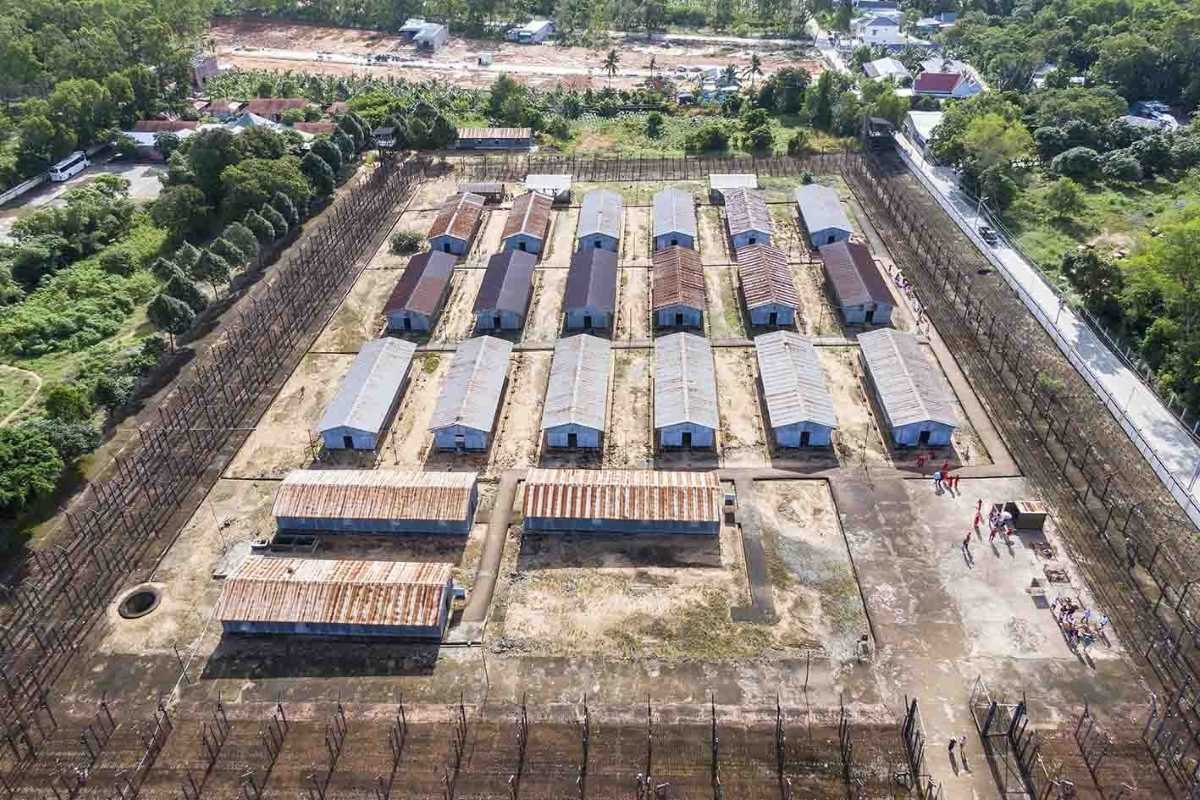
Opening Hours and Entry Fees
The Phu Quoc Prison museum is open daily from 7:30 AM to 5:00 PM, allowing ample time for exploration.
Entry fees are modest, supporting site maintenance and preservation efforts. Visitors typically pay a small ticket price, which may vary for locals, students, or groups. Checking current fees before your visit helps you budget effectively.

Best Time and Season to Visit
The best time to visit Phu Quoc Prison is during the dry season, from November to April. During these months, the weather is pleasant, and rainfall is minimal, making travel and outdoor exploration easier.
Avoid the wet season (May to October) if possible, as heavy rains can disrupt travel plans and reduce comfort. Visiting early in the morning also helps avoid crowds and the midday heat.

Visitor Facilities and Amenities
While Phu Quoc Prison maintains a historical atmosphere, visitor facilities are available to enhance your experience:
- Restrooms: Basic but maintained for visitor use.
- Parking: On-site parking available for cars and motorbikes.
- Signage: Informational signs throughout the site assist self-guided exploration.
- Guides: Available for hire to provide in-depth tours and historical context.
- Refreshments: Limited food and drink vendors near the entrance.
Knowing what facilities are available helps you prepare for a comfortable and informed visit.

Nearby Attractions and Complementary Activities
Phu Quoc Island offers more than just the historic Phu Quoc Prison. Exploring nearby attractions and activities enriches your travel experience and allows you to discover the island’s natural beauty and vibrant culture. From lush national parks to sandy beaches, bustling markets, and convenient accommodations, there is something for every traveler. Planning your itinerary with these complementary experiences will make your visit to Phu Quoc Prison even more memorable.

Phu Quoc National Park and Nature Trails
Located near Phu Quoc Prison, Phu Quoc National Park features extensive hiking trails through tropical rainforest and diverse wildlife habitats. The park offers peaceful trekking routes that lead you past waterfalls, dense foliage, and birdwatching spots. Nature enthusiasts can enjoy spotting rare species while immersing themselves in the serene environment.
- Ganh Dau Trail: A moderate trek with scenic coastal views.
- Waterfall Hikes: Visit Suoi Tranh or Tranh Waterfalls within the park.
- Wildlife Spotting: Chance to see monkeys, hornbills, and other native species.
- Guided Tours: Available for deeper insights into the park’s ecology.
Exploring Phu Quoc National Park hiking trails complements your cultural visit with natural adventure and relaxation.

Long Beach and Coastal Activities
Just a short distance from Phu Quoc Prison, Long Beach is one of the island’s most popular coastal spots. The beach offers pristine sands and calm waters, perfect for swimming, sunbathing, and water sports. Local beachfront restaurants serve fresh seafood, making it a great place to unwind after touring the prison.
- Swimming and Sunbathing: Relax on the wide sandy shores.
- Snorkeling and Diving: Explore vibrant coral reefs nearby.
- Beachfront Dining: Enjoy local flavors with ocean views.
- Sunset Viewing: Famous for breathtaking sunsets over the Gulf of Thailand.
Adding Long Beach Phu Quoc activities to your itinerary balances history with leisure and natural beauty.

Local Markets and Cultural Experiences
Nearby markets provide an authentic taste of Phu Quoc Island’s culture. The bustling Duong Dong Market offers fresh seafood, tropical fruits, local crafts, and vibrant street food. Visiting these markets immerses you in local life and supports community artisans.
- Seafood Stalls: Fresh catches cooked to order.
- Handicraft Shops: Handmade souvenirs and traditional art.
- Street Food Vendors: Sample bánh xèo, grilled seafood, and tropical fruits.
- Cultural Events: Festivals and performances sometimes held nearby.
Exploring local markets near Phu Quoc Prison enriches your travel with cultural discovery and unique flavors.

Accommodation Options Near the Prison
Comfortable lodging options close to Phu Quoc Prison make it easy to plan your visit and explore the island further. From budget guesthouses to mid-range hotels and luxury resorts, there are choices for every traveler.
- Guesthouses: Affordable stays with local charm.
- Boutique Hotels: Mid-range comfort and personalized service.
- Resorts: Beachfront luxury with full amenities.
- Homestays: Authentic local experiences.
Choosing accommodation near Phu Quoc Prison offers convenience and enhances your overall island experience.

Conservation, Cultural Preservation, and Tourism Impact
Phu Quoc Prison stands not only as a historical monument but also as a vital cultural heritage site requiring ongoing preservation. Protecting this landmark ensures future generations can learn about Vietnam’s wartime struggles and resilience. The impact of tourism here is significant; it supports preservation efforts but also demands responsible management to prevent damage. By understanding conservation programs and sustainable practices, you can contribute to maintaining the prison’s legacy while enjoying a meaningful visit. Plan your visit with awareness of the importance of cultural preservation at Phu Quoc Prison.

Efforts to Preserve the Historical Site
Numerous initiatives focus on maintaining and restoring Phu Quoc Prison to its authentic state. These efforts include:
- Structural Repairs: Restoring damaged buildings and reinforcing old walls.
- Artifact Conservation: Protecting and displaying historical items found at the site.
- Visitor Management: Implementing controlled access to reduce wear and tear.
- Collaboration: Partnerships between government bodies and cultural organizations.
These programs ensure that Phu Quoc Prison restoration projects protect the site’s integrity and history for educational and commemorative purposes.

Role of Education and Awareness Programs
Education plays a crucial role in enhancing visitor understanding and respect for Phu Quoc Prison. Key programs include:
- Guided Tours: Offering detailed historical narratives and survivor stories.
- School Outreach: Teaching younger generations about the prison’s significance.
- Exhibitions: Interactive displays explaining the prison’s history and context.
- Public Seminars: Events focusing on cultural heritage and war history.
These educational efforts increase public awareness, ensuring that Phu Quoc Prison educational programs foster cultural respect and preserve memory.

Sustainable Tourism Practices at the Prison
Sustainable tourism is vital to balancing visitor access with site preservation. Practices encouraged at Phu Quoc Prison include:
- Limiting Visitor Numbers: To prevent overcrowding and damage.
- Eco-Friendly Facilities: Minimizing waste and conserving resources on-site.
- Visitor Guidelines: Educating guests on respectful behavior and site rules.
- Community Engagement: Involving locals in tourism management to promote cultural pride.
Adopting sustainable tourism Phu Quoc Prison principles helps protect the site while offering a rewarding experience for travelers.

Visitor Tips and Recommendations
Visiting Phu Quoc Prison is a profound experience that requires some preparation to make the most of your trip. Knowing what to expect, how to plan your itinerary, and tailoring your visit to your interests ensures a smooth and meaningful experience. Whether you are traveling alone, with family, or as a history enthusiast, these tips will help you engage respectfully and comfortably with this historic site. Prepare for your visit to Phu Quoc Prison and enrich your understanding of Vietnam’s heritage.

How to Prepare for Your Visit
Preparing to visit Phu Quoc Prison involves several key steps to ensure comfort and respect for the site:
- What to Bring: Comfortable shoes, sun protection, water, and a camera for photos.
- Weather Awareness: Check local weather forecasts to dress appropriately and bring rain gear if needed.
- Site Rules: Follow guidelines such as no loud talking, no touching exhibits, and respecting memorial areas.
- Physical Readiness: The site involves walking and some uneven terrain, so plan accordingly.
These preparations help you navigate the site easily while honoring its solemn atmosphere.

Suggested Itineraries Including the Prison
Integrate your visit to Phu Quoc Prison with other nearby attractions for a fulfilling day or multi-day itinerary:
- Half-Day Tour: Morning visit to the prison followed by an afternoon at Phu Quoc National Park.
- Full-Day Exploration: Start with Phu Quoc Prison, lunch at Duong Dong Market, then relax at Long Beach.
- Multi-Day Stay: Combine the prison visit with island tours, snorkeling trips, and cultural experiences.
Planning your itinerary with Phu Quoc Prison day itinerary suggestions lets you enjoy history and leisure seamlessly.

Tips for Families, History Enthusiasts, and Casual Tourists
Different visitor groups can benefit from tailored advice:
- Families: Keep visits shorter, engage children with storytelling, and take breaks in shaded areas.
- History Enthusiasts: Opt for guided tours to gain deeper insights and access detailed exhibits.
- Casual Tourists: Focus on key highlights like the memorials and exhibitions for a concise experience.
Understanding these tips helps each visitor group maximize their experience at Phu Quoc Prison.

Conclusion
Visiting Phu Quoc Prison offers a powerful window into Vietnam’s complex history and cultural heritage. This site stands as a testament to resilience and the human spirit amidst hardship. Reflecting on the prison’s past allows you to appreciate its role in preserving national memory and honoring those who suffered here. Plan your visit with respect and awareness to fully embrace the meaningful experience that Phu Quoc Prison provides.

Summary of the Prison’s Importance
Phu Quoc Prison holds great historical and cultural significance as a symbol of wartime struggle and endurance. It is one of Vietnam’s most poignant war heritage sites, preserving stories of sacrifice and resistance. This legacy invites visitors to reflect on the past while supporting ongoing cultural preservation efforts. Understanding this importance enriches your visit and deepens your connection to Vietnam’s history.

Encouragement for Responsible and Meaningful Visits
When visiting Phu Quoc Prison, approach the site with respect and cultural sensitivity. Responsible tourism helps protect this delicate heritage and ensures it remains a place of learning for future generations. Follow site guidelines, engage thoughtfully with exhibits, and support local preservation initiatives. Your mindful visit contributes to sustaining the legacy of this vital war memorial.
Mike Nguyen
Travel Advisor
Mobile: +84917506881 (whatsapp available)
Email: contact@asiatravellinks.com
Faqs
Phu Quoc Prison, also known as Coconut Tree Prison, is a significant historic site on Phu Quoc Island that dates back to the French Colonial Era. Originally built to detain political prisoners, it later became notorious during the Vietnam War as a detention and torture center.
- Established by the French as part of their penal system to suppress resistance.
- Expanded during wartime to house Viet Cong fighters and political detainees.
- Known for harsh conditions, brutal interrogation, and resistance symbolism.
- Preserved today as a museum and war memorial showcasing Vietnam’s resilience.
Visiting Phu Quoc Prison offers a profound look into Vietnam’s wartime past and honors the endurance of those who suffered here.
Getting to Phu Quoc Prison from Duong Dong Town is straightforward due to well-maintained roads and clear signage.
- The prison is about 7 to 10 kilometers south along National Road 46.
- Transportation options include taxis, motorbike rentals, and private cars.
- The journey typically takes 15 to 20 minutes depending on traffic.
- Public transport is limited, so private or rented vehicles are recommended.
Planning your route in advance helps ensure a smooth and timely visit to this important historic site.
The Phu Quoc Prison museum is open daily with convenient hours for visitors.
- Open from 7:30 AM to 5:00 PM every day.
- Entry fees are modest, with discounted rates for students and locals.
- Fees support ongoing preservation and educational efforts.
- Tickets can usually be purchased at the entrance on arrival.
Checking current fees before your trip helps you budget appropriately for a meaningful visit.
The optimal time to visit Phu Quoc Prison is during the dry season, which runs from November to April.
- Weather is pleasant with minimal rainfall.
- Morning visits help avoid midday heat and crowds.
- Avoid the wet season from May to October due to heavy rains.
- Dry months offer better conditions for walking and outdoor exploration.
Choosing the right time ensures a comfortable and enriching experience at this historic site.



